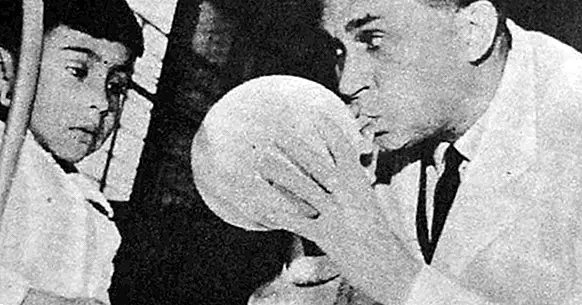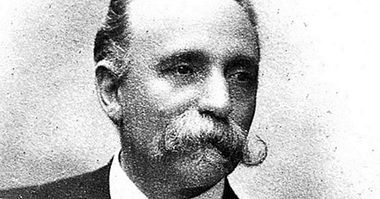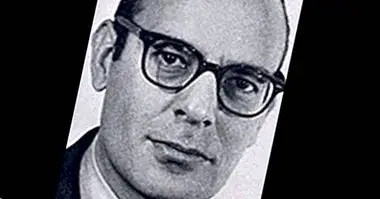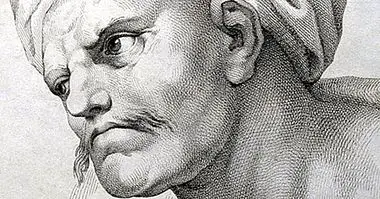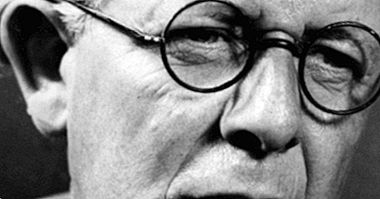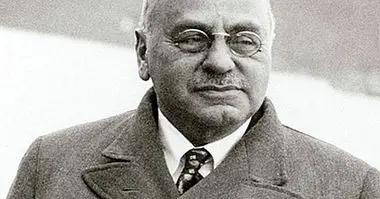René Spitz: biography of this psychoanalyst
When we talk about a person with depression, we usually imagine a man or woman suffering an episode of depressed mood and little ability to perceive pleasure and joy in what they do, hopelessness and probably some passivity and lack of desire to do nothing The image that has come to our mind will probably be that of an adult or a teenager. But the truth is that there are also various types of depression in childhood.
One of the first authors to investigate them, and creator of diverse concepts, was René Spitz. The life and work of this author is of great interest, which is why throughout this article let's see a little biography of René Spitz .
- Related article: "History of Psychology: authors and main theories"
Brief biography of René Spitz
René Spitz, whose full name was René Árpád Spitz, came to the world on January 29, 1887. His birth occurred in the city of Vienna , being the oldest of two brothers children of Árpád Spitz and Ernestine Antoinette Spitz. He was part of an important and economically influential family from Hungary and of Jewish origin. He also had a younger sister, Desirée Spitz (later Bródy).
Despite being born in Vienna, the family moved to Budapest, where the young Spitz would grow up and begin to develop and train at an academic level.
Training
Spitz would enter the University of that city, conducting studies in Medicine. Besides in Budapest, he studied in other cities such as Lausanne and Berlin. During these years he worked with professionals like Sandor Ferenczi and began to become familiar with the work of Sigmund Freud He concluded his studies in medicine during the year 1910. All this made something that appeared in Spitz a great interest with respect to the human psyche and psychoanalytic theory.
A year later (in 1911) and under recommendation of Ferenczi, Spitz would begin to analyze for him in order to learn, and ended up training in psychoanalytic psychology. He became a member of the Viennese Psychoanalytic Society in 1926, a society from which he participated in several investigations. Later in 1930 he did the same in the German Psychoanalytic Society.
However two years later during 1932 He moved to the city of Paris, where he would act as professor of psychoanalysis at the École Normale Supérieure . Also little by little his interest would be focused on the infantile neurosis, beginning to focus his research on the development of minors from 1935.
But there came a time when Nazism took power and a large number of people had to emigrate in order to avoid the war, including Spitz.
Transfer to America and working life in the continent
In 1939, during the Second World War, this important professional left Paris and went into exile in the United States because of the risk to his life when he had Hebrew descent. There he would work as a professor at the City College of the City University of New York. He also produced a film with his research that would see the light in 1952 and will also maintain a job as a professor of psychiatry at Lenox Hill Hospital.
Later he moved to Denver, Colorado, where he would be hired as a professor at the University of Colorado. Beyond your tasks as a teacher, in this period of his life he would begin to focus more and more on the relationships of mother-child dyads and it would be during this vital period that I would start working with orphaned children.
And it would be with them that they would discover one of their most well-known concepts: anaclitic depression. It would also analyze the effects of abandonment and affective deprivation, as well as child development analyzing object relations. During this period he would make numerous studies regarding infantile neurosis and development from a psychoanalytic perspective and from genetic psychology (seeking the veracity of the data within his model). He also made numerous graphic reports, such as the one produced in 1952: "Psychogenic Illness in Early Childhood".
In 1945 he would begin publishing in the magazine "The Psychoanalytic Study of the Child", and one year later he published one of his great works in which he explained the concept of anaclitic depression: the book Anaclitic Depression, The Psychoanalytic Study of the Child . Over the years he made a large number of publications and works, in addition to continuing to teach at the university. Finally was named president of the Psychoanalytic Society of Denver in 1962 , position in which it remained until a year later.
- Maybe you're interested: "Sigmund Freud: life and work of the famous psychoanalyst"
Some of his best known contributions
Among the most representative works and concepts of the author highlights the conception of analytical depression , which is defined by the presence of irritability, asthenia, dependence, anguish, sleep and feeding problems, isolation and little attachment and problems at the intellectual, communicative and motor level. This symptomatology arises from the existence of a partial deprivation of affect during early childhood, and specifically in the first eighteen months, in which the child has not been able to have a close relationship with the mother. His studies he carried out with children up to two years.
Within this concept and elaborating more his theory established the existence of three stages along this type of depression: the pre-objectal phase, in which the appearance of the smile as an organizational mechanism and there is no possibility of distinction between objects or separate from the rest, the phase of the precursor object in which it begins to be able to recognize the known and finally the real object phase in which a differentiation between mother and child begins to be understood and the anguish when it is gone , and in which distress and the ability to say no also appear.
We must also take into account the concept of hospitalism, which mainly refers to separation between mother and child for a prolonged period, in situations such as hospital admission.
His observations made him consider that the relationship with the mother is the origin and marks the set of social relations . He also worked on aspects such as identity acquisition. Another concept known to this author is that of marasmus, which refers to the emergence of pathology in children with deprivation of affection, and can generate a state of great weight loss and appetite and in many cases can lead to the death of the child.
Death and legacy
The death of this author occurred on September 11, 1974, in the city of Denver, at 88 years of age.
Although he is not an author especially known by the majority of the population, his legacy still endures: was the first to assess the existence of psychiatric alterations of psychiatric type in children , and specifically in showing interest, analyzing and assessing the existence of depressive symptoms in minors. His works and those of Bowlby are complementary, helping to understand elements such as the attachment of minors. And the idea of anaclitic depression and reactions like hospitalism and marasmus are an important contribution to science. In this sense, it also incorporates a certain rigor in the handling of information, obtained through processes more based on observation and less abstract than other psychoanalysts.
Bibliographic references:
- Emde, R. N. (1992). Individual meaning and increasing complexity: contributions of Sigmund Freud and Rene Spitz to developmental psychology. Developmental Psychology, 22 (3), 347-359.
- Spitz, R.A. (1946). Hospitalism; A follow-up report on research described in Volume I, 1945. The Psychoanalytic Study of the Child, 2, 113-117.

